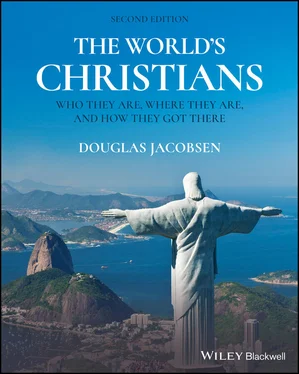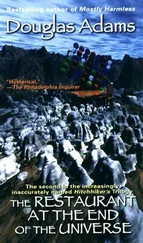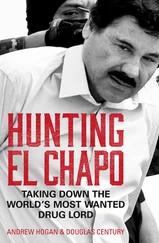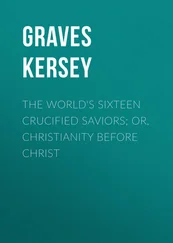Part III– the largest part of the book – is organized geographically and describes where Christians are living in the present. Nine regions are identified as representing distinctly different zones of Christian life and experience. These regions are: (1) the Middle East and North Africa, where Christianity is barely surviving; (2) Eastern Europe, where Orthodox Christianity is dominant; (3) Central and South Asia, where Christians represent only a very small minority of the population, but have ancient roots; (4) Western Europe, which was the undisputed center of world Christianity for almost five hundred years; (5) Sub‐Saharan Africa, where Christianity is currently growing faster than anywhere else; (6) East Asia, where Christianity is more unevenly distributed than anywhere else on earth; (7) Latin America, where close to half of the world’s Catholics now live; (8) North America, which is the most Protestant region of the globe; and (9) Oceania (Australia, New Zealand, and the Pacific islands), where Christianity was only recently introduced.
The increasing diversity of contemporary Christianity is made obvious in these nine chapters. In contrast to past centuries, world Christianity no longer has any identifiable spiritual or geographic center that controls the movement as a whole. Instead, Christians now inhabit a “flat” world, a world where the Christian population is spread out more or less evenly around the globe and where new and varied experiments are being lived out regarding what it means to be a follower of Jesus today.
PART I Who They Are: Four Christian Mega‐Traditions
Introduction
To be a Christian is to be a follower of Jesus Christ, but not all Christians follow Christ in the same way. Those differences become apparent with a quick survey of the social structure of contemporary Christianity. Christians are institutionally divided into more than 35,000 separate and distinct organizations, ranging in size from the enormous Roman Catholic Church, which has more than a billion members worldwide, to the grandly named Universal Church of Christ, which has only a few hundred members, almost all of them in the Caribbean. Every week, Christians gather at more than five million local churches and parishes to worship God. And that’s just the formal structure. Informally, there are millions of additional Christian groups that meet in homes, schools, and places of work for Bible study, prayer, and mutual support.
The diversity that now exists within Christianity is so broad and multifaceted that some scholars have begun to use the term “Christianities” (instead of “Christianity” in the singular) to describe the movement. There is a logic to this plural terminology. World Christianity has become so divergent that it can sometimes be very hard to see what binds together all these groups and individuals. But, despite an enormous variety of beliefs and practices, some important commonalities still define the movement, and these distinctive ideas, practices, and understandings of human life are shared by all or almost all Christians.
What Christians Hold in Common
The broad contours of participation in the Christian movement are relatively obvious. The vast majority of Christians worldwide share the practice of gathering for worship on Sunday; most Christians, if they can afford it, meet for worship in a building called a church; and almost all Christians view the Bible as uniquely the “word of God” that Christians are called to follow. Additionally, almost all Christians worldwide share a common understanding of Jesus as Christ, of God as a Trinity, of salvation as a gift from God, and of sacraments as church rituals that help Christians in their walk with God.
Jesus as Christ : The most obvious point of connection among Christians is their faith in Jesus. The historical Jesus was an unlikely religious leader. He lived the first thirty years of his life in relative obscurity as the son of Mary and her husband Joseph, who was a carpenter in the small town of Nazareth. Then, for just a few years, Jesus took on the role of a wandering Jewish prophet and teacher, first in the rural region of Galilee and later in Jerusalem.
Jesus’s message was simple but profound. As a faithful Jew, he affirmed much of the Judaism of his day, including the Golden Rule (“do unto others what you would have them do unto you”), but Jesus frequently added his own twist to those teachings. Some of these additions – the folksy way he referred to God as “abba” (best translated as “daddy”), his willingness to bend the law to accommodate human frailty, his claim that he was able to forgive sins – were troubling to some of his Jewish contemporaries.
His message was also troubling to Rome. Jesus spoke of a coming “kingdom of God” and described his own actions as the dawning of that kingdom. He instructed his followers to give appropriate respect to Caesar, the Roman Emperor, but he also told them to give their entire lives to God, a qualification that clearly limited any loyalty owed to Caesar. And, while he did not seek political power for himself, he refused to cower when he was arrested and questioned by Rome’s political appointees in Palestine. All of it seemed potentially subversive to an empire that demanded absolute obedience, and Rome responded vigorously, as Rome always did. Using the gruesome spectacle of execution on a cross, the Empire eliminated Jesus and sent a public message to his followers that the show was over.
Most local residents thought that was the end of the matter; they assumed that another pesky prophet had come and gone and that life would now return to normal. But killing Jesus did not stop the movement. His closest followers – all of whom were, like Jesus, Jews themselves – soon became convinced that Jesus had survived his crucifixion or, as they put it, he had risen from the grave and conquered death. They reported that they had seen him alive, in a glorious resurrected body, and that he had commanded them to continue the work he had begun. Rather than using his given name Jesus, which numerous other individuals shared, they called him “the Christ” (or just “Christ”), which means “the anointed one,” God’s special representative on earth.
Very quickly, many of the earliest followers of Christ came to think of Jesus Christ not merely as God’s representative , but somehow as divine himself. Yes, they said, Jesus was a human being, but Jesus was also God incarnate, God appearing in human form. Christians around the world today continue to make this claim. Thus, in addition to being committed to following the teachings of Christ, most Christians also worship Christ as God. This has been the main driving force powering the growth of Christianity through the centuries and around the world: that, in Jesus, God came to earth in order to heal the woes of humankind. This belief makes Christianity more than just the religion of Jesus, the religion taught and practiced by Jesus himself. If that was all that was claimed, then Christianity would be a new variety of Judaism. But Christianity quite quickly became a very different religion than Judaism, and the key difference is what Christians believe about Jesus.
God as Trinity : New ideas about God did not stop with Christianity’s affirmation of the deity of Christ; Christians also believe that God is a Trinity. Jesus had spoken of a paraclete (meaning “comforter” or “advocate”) who would come to help his followers after he had departed the earth. With that promise in mind, Jesus’s closest followers gathered together in Jerusalem after his death to wait for this to happen. On the day of Pentecost, a Jewish holy day that took place fifty days after the celebration of Passover, those followers reported that the Holy Spirit had descended from heaven and filled them, both individually and as a group, with God’s presence and power. Ever since, Christians have conceptualized their relationship with God as involving not only the God of creation and the person of Jesus Christ, but also their ongoing experience of God as life‐giving Spirit.
Читать дальше












